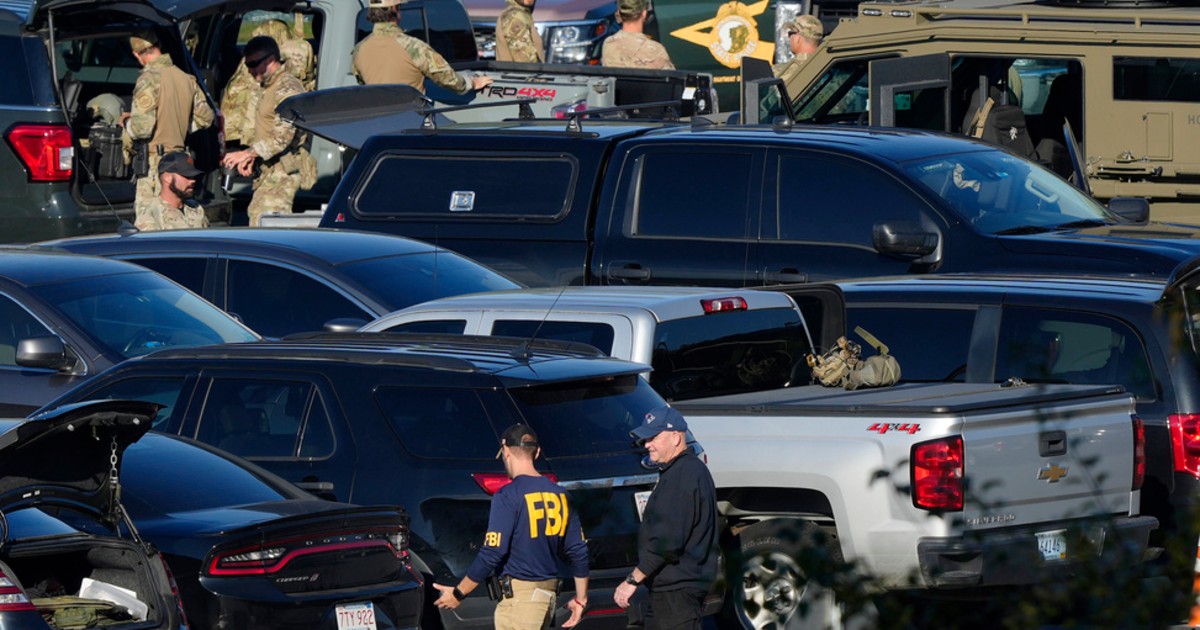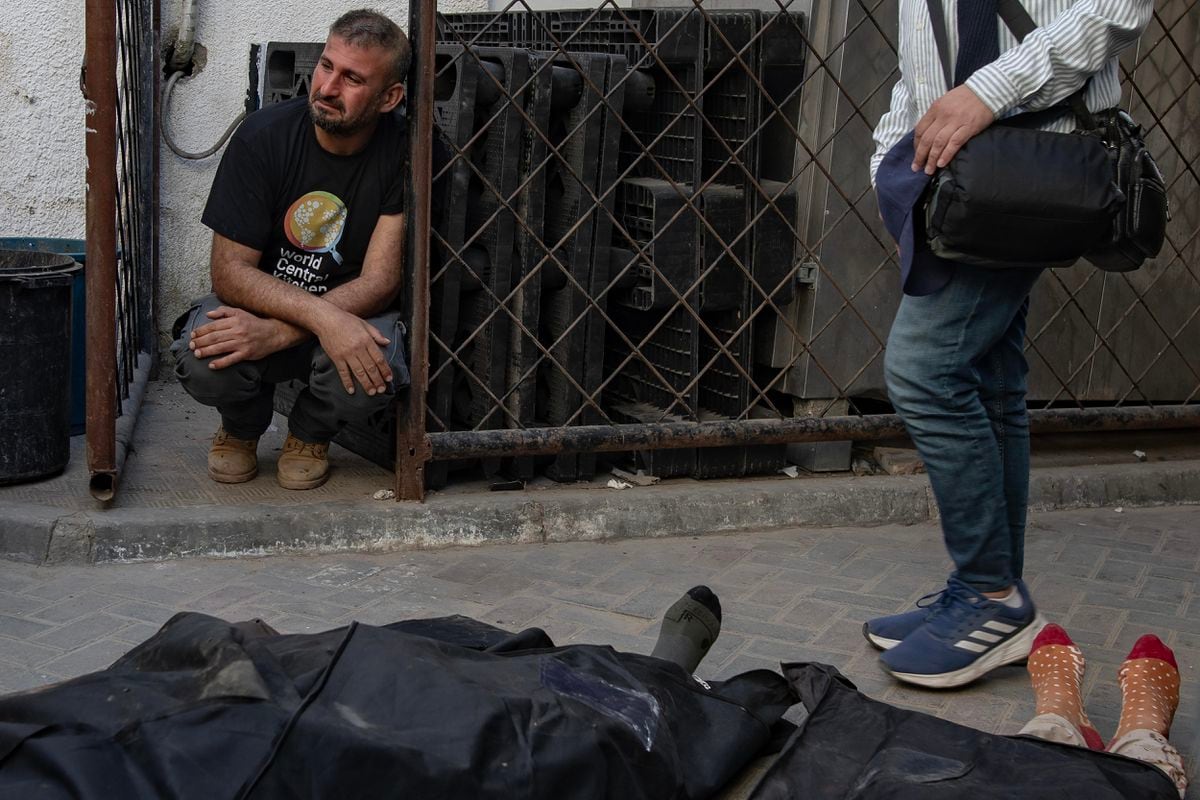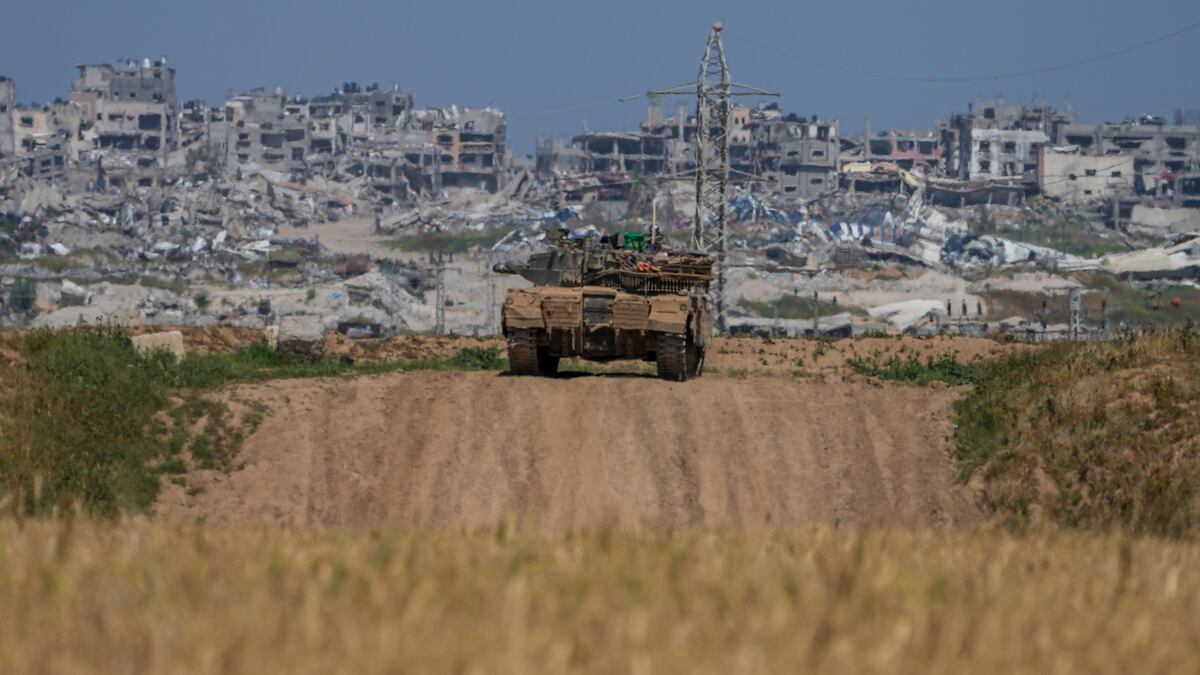A delegation led by President Andrés Manuel López Obrador during the opening ceremony of military facilities and archives for the commission investigating the Dirty War, on June 22, 2022, in Mexico City.Graciela López (Cuartoscuro)
It seemed like a ceremonial act, the celebration of a milestone in Mexico, the opening of military facilities and archives to the Commission investigating the Dirty War.
The Government had summoned the press to Military Camp Number One, which is shared by the capital and the State of Mexico, one city within another.
The idea was to celebrate the paradigm shift, the transparency of the Armed Forces.
And so it has started until, suddenly, the atmosphere has become rarefied.
After the speeches of victims, family members and the Undersecretary for Human Rights of the Ministry of the Interior, Alejandro Encinas, General Luis Crescencio Sandoval, head of the Army, spoke.
Far from the tone of the previous ones, Sandoval has adopted a speech that vindicated the Armed Forces, even during the Dirty War, the almost three decades of repression orchestrated by the State, carried out largely by the Army itself.
"Military and family members who were affected by the events that occurred at that time are present," said the secretary.
“I am proud to tell you that López Obrador authorized the inscription of the names of deceased soldiers for reasons of past events in the monument to the fallen of the Armed Forces, as a tribute and a heartfelt tribute to the soldiers who fulfilled their duty even at the cost of his life”, he added.
It has been practically the end of his speech, booed by relatives and survivors of state repression, who have raised their banners and rehearsed a song shouted a thousand times: "Alive they took them away, alive we want them."
From the platform, Micaela Cabañas, daughter of the murdered guerrilla leader Lucio Cabañas, recorded what was happening with her cell phone.
Minutes before, Cabañas had told how she and her mother were detained right there, in the military camp, 48 years ago.
How they raped and tortured her mother: “She told me that the soldiers took me by the foot and put a gun to my head.
'Tell us where Lucio is, tell us,' they said”.
Micaela Cabañas was then two months old and her mother was 14 years old.
Sandoval's tone has shocked and angered victims and their families, who have suffered from state ignorance for decades.
The Commission, created by the will of the president, Andrés Manuel López Obrador, represents for them the last opportunity to see justice done, to know the content of archives of the time, to locate the spaces where their own could have passed during the repression.
Alicia de los Ríos, daughter of a woman who disappeared in the 1970s, has also heard the speech of the military chief from the gallery.
Her intervention preceded that of the general.
In an interview with EL PAÍS at the end of the event, the woman pointed out her anger at Sandoval's attempt to equate the military victims with those of the counterinsurgency.
“They were going to fight civilians, they wanted to exterminate them.
His action was not defensive, it was aimed at extermination, which differentiates us ”, she has argued.
De los Ríos added: "If its purpose is to inscribe fallen soldiers in the golden patriotic history, ours is for truth and justice."
For the woman, “the tensions continue because it is a live conflict.
Watching the whole event… The Sandoval thing is a reflection of the unresolved tensions, the unresolved demands.
We are trying to break inertia.
It is what we have seen today, an inertia, a resistance to accepting our opposition relatives as protagonists of history.”
Good news
Beyond Sandoval's speech, the event illustrates good news: the opening of archives and military installations to the scrutiny of experts from the Truth Commission.
As López Obrador has said in his intervention, after that of the general secretary, "it is an act of hope, an act to seek among all to close a stage, a black history of suffering, of repression."
Before the president, Undersecretary Encinas has tried to describe the magnitude of the repressive apparatus.
“In this place, in June 46 years ago, one of the most feared repressive organizations in this country was installed, the White Brigade, made up of the Federal Security Directorate, the Federal Judicial Police, the Federal District Police and the Military Police.
From here, 51 years ago, the Web Plan was implemented, to dismantle the guerrillas of Lucio Cabañas and Genaro Rojas.
From Lomas de Sotelo (as the Army headquarters is known) a telegram was sent to Chilpancingo, ordering to harass, capture or exterminate the guerrillas that acted in that region”, he said.
In an interview with this newspaper, Aleida García, a member of the Commission, details the paths to be explored in the coming months.
“Together with the National Search Commission, we will reconnoiter some sites, indicated by survivors as places of detention, where disappeared persons were, Military Camp Number One, Pie de la Cuesta in Guerrero… One of the objectives is to identify the spaces where they could have arrested.
Survivors talk about basements, for example… That recognition is going to be done with them, ”she explains.
Another path is the documentary search.
"There is a list of possible documentary collections," adds the expert, "the technical team identified some: the archive of the Presidential General Staff, the archive of the General Staff of the Secretariat of National Defense, the Second Military Police Battalion, the archive of the parachute rifle battalion and also from some military zones, in addition to what is concentrated here in Mexico City.”
For Camilo Vicente Ovalle, part of the technical team that García mentions and one of the greatest connoisseurs of the repression in Guerrero, “the opening is important, it had never happened before.
And that the start is in Military Camp Number One is relevant”, he defends.
"One of the great pending tasks is to quantify the number of people who could have passed through there, subject to temporary disappearance," he says in reference to the military installation.
"Look, only in the case of Guerrero, 205 or 206 survivors were identified who passed through one of the installations of civil or military security forces."
subscribe here
to the
newsletter
of EL PAÍS México and receive all the informative keys of the current affairs of this country









